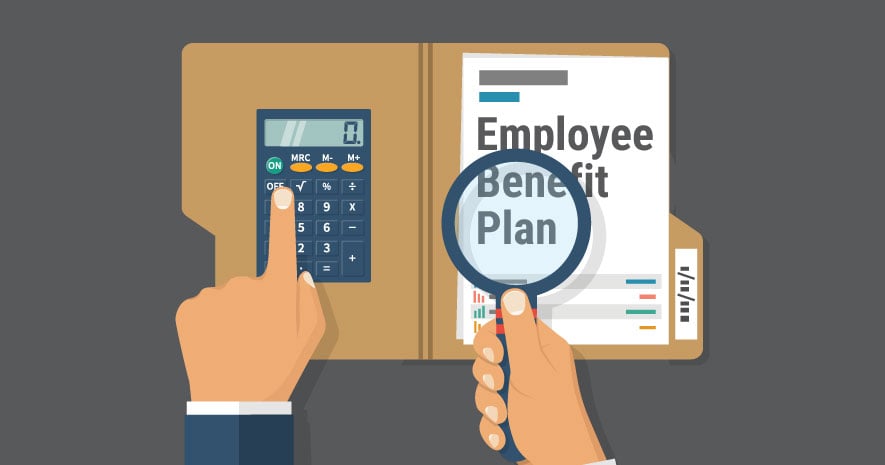Growing beyond 100 employees is an important landmark in a company’s history. While companies may view crossing this threshold as cause for celebration, the Department of Labor (DOL) may view it as a trigger for increased scrutiny of your employee benefit plan. Certain employee benefit plans with 100 or more eligible participants may be required to engage an independent auditor (referred to as an Independent Qualified Public Accountant or IQPA) to audit the plan’s financial records.
Going through an audit for the first time can be a daunting task. Your auditor will ask for information you might expect, such as employee census and payroll data, plan documents, plan financial statements, contribution deposit history, and more. What you might not expect is getting requests for that information from previous years, or for a sample of participants over a certain timeframe to check for past errors. It’s a lot of data to supply, so keeping good records and planning ahead is paramount. A solid auditor with benefit plan audit experience can be extremely helpful in guiding plan sponsors through the first-time process.
Understanding the 100-Participant Threshold
Generally, when a plan has 100 or more eligible participants, it’s considered a “large plan” for reporting purposes, which requires an annual examination from an IQPA. The audit must be included in the plan’s annual report – filed with the DOL on a Form 5500 – and is due within seven months of the end of the plan year. It may be extended to nine and one-half months of the end of the plan year.
While 100 participants is the general threshold for large-plan status, the DOL does provide some wiggle room. Plans that have between 80 and 120 eligible participants at the beginning of the plan year are allowed to file their Form 5500 in the same way they did the year prior. For example, a plan that had 70 participants on January 1, 2017, and filed as a small plan for 2017, and then grew to 115 participants by January 1, 2018, may elect to file as a small plan again—and avoid an audit—for the 2018 plan year. An audit would not be triggered in this example until the eligible participants exceeded 120 as of the first day of the Plan year.
It’s important to understand how to count plan participants by beginning with the definition of an eligible participant as outlined in your plan document. The qualification may include age or service requirements, so it’s important to keep good records for those criteria. For 401(k) plans, the number of eligible active employees are counted even if they have never elected to participate and don’t have an account. Former employees who have left their 401(k) funds in the plan are also included in the participant count. The participant count for welfare benefits are less inclusive than for 401(k) plans because an employee must elect and make any required payments for coverage in order to be considered a participant.
What To Expect
To ensure a smooth process, plan sponsors should anticipate the auditor’s requests and gather certain plan records in advance of the auditor’s visit. Often, the plan’s record keeper or third-party administrator can assist or provide the necessary information, including:
- Plan documents and amendments (including the Internal Revenue Service’s opinion letter on the plan document)
- Summary plan description and any modifications
- Agreements with service providers, especially record keeper and plan custodian
- Plan committee minutes
- Documentation of the plan’s internal control processes
- Employee census (list of all paid employees for the year including key demographic data)
- Payroll records
- A listing of contributions remitted to the trust, by pay period
- Trust and recordkeeping reports
- Independent appraisal for company stock or other non-traditional investments held by the 401(k)
- Distributions, loans or other plan activity
- Proof of insurance coverage for employee crime (fidelity bond)
- Prior Form 5500 filings
Remember, your auditor works outside your company and needs to get a good understanding of how your plan works. It’s important to offer full disclosure of any issues related to the plan, such as operational errors or contributions remitted late to the plan. Just like the plan sponsor has a fiduciary duty, the auditor’s job is to protect the interests of the participants by ensuring the plan is operated in accordance with the plan document and the laws that govern qualified plans. During the process, the auditor might identify issues that put the plan’s qualified and tax-exempt status in jeopardy if not fixed. While beyond the scope of an independent audit, a knowledgeable auditor can help the plan sponsor understand how to avoid the same mistake in the future and formulate a plan of action including an introduction to a tax specialist that can help you utilize a variety of IRS and DOL programs to fix any issues the plan might have.
Your auditor may prepare a draft of the report or review a draft prepared by plan management. It should include financial statements and related footnote disclosures, as well as supplemental information as required by the DOL. After you approve the report, the auditor will give you a formal copy, which will be attached to the Form 5500 by the person responsible for E-filing the annual report.
Plan Ahead and Find the Right Auditor
The DOL can reject your 5500 if it finds errors in the audit report, which may result in fines or other severe penalties. Three years ago, the DOL evaluated the quality of audit work being performed on employee benefit plans by independent qualified public accountants and found that nearly 40 percent of audits had major errors that would cause the department to reject a company’s Form 5500.
As a plan fiduciary, it’s critical to work with a competent, experienced independent auditor—especially if you’re going through an audit for the first time. Although the audit process may seem daunting, it can go smoothly with a little bit of planning and organization. Even if your plan hasn’t crossed the 100-participant threshold yet, it’s never too early to start strengthening your record-keeping systems and thinking about what information you may need to provide down the road. In the end, the audit helps strengthen benefit plan policies and processes.





